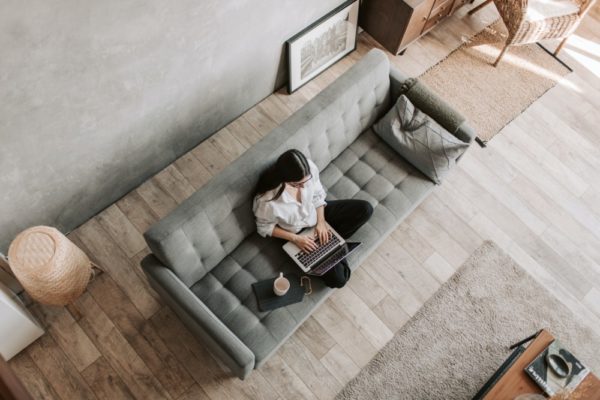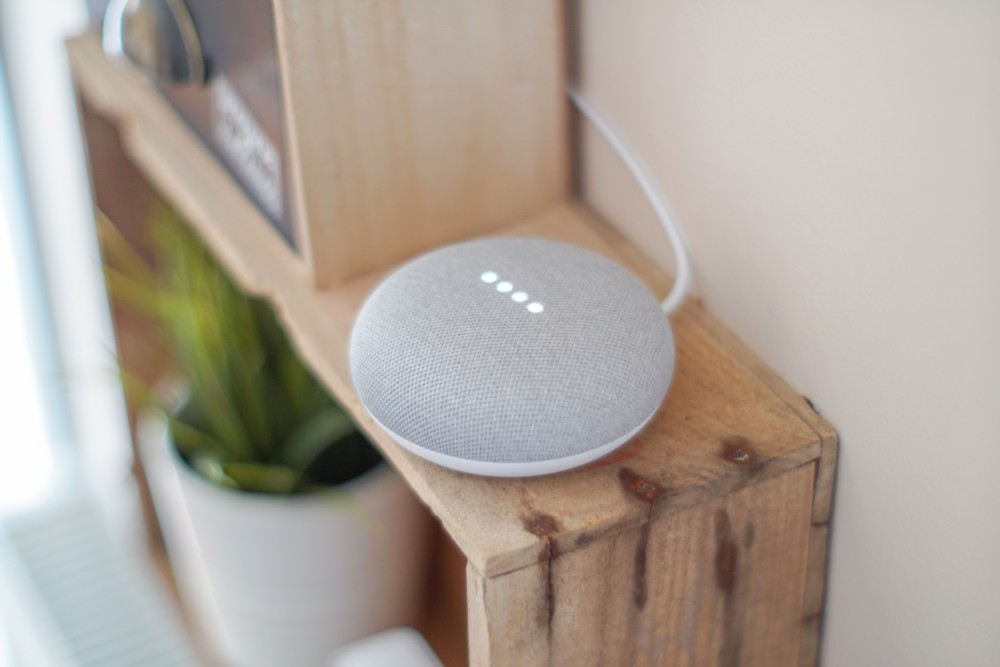Building the Future of Homes
From antibacterial surfaces to bigger offices, COVID-19 is transforming the way homes are built
As the year continues, the effects of the global pandemic are quickly infiltrating every aspect of society, including our own homes. Whether in construction or due to society’s newfound consciousness of home functionality, home design is shifting rapidly to meet new demands and to adapt to new circumstances.
Unfortunately, many of these changes are results of the pandemic’s negative impacts. From cleaning products to food, COVID-19 has brought many shortages. Materials and labor for home construction have not been exempt from this blow.
“We can’t find good help, we’re constantly waiting for materials and products,” says Jake Vande Voort, founder of Modern Built Homes in Green Bay.
Stay-at-home orders in effect around the world have severely restricted the production and distribution of materials as well as the availability of workers. Consequently, architect Cindi Mac Swain from Vanney-Mac Swain Home Planning in Appleton says, “The cost of constructing a home has gone up significantly in the last couple of months.”
With economic and building challenges, homes may decrease in size at a time when square footage is at a premium. This means ingenuity and imagination are the new tools to creating the perfect home and are the foundation behind many of the innovative changes home design is encountering.
Designated Spaces
While open-concept layouts have been the trend and continue to be currently, more time spent at home has clued those who work from home or have a family into the benefits of separate spaces where a purpose is designated.
The concept “work from home” has never had as much prevalence or as much possibility as in the present. Corporate offices are seeing the advantages of having employees work from home, and families are embracing the new possibilities of increased time together. As Greg Drusch, marketing manager at Cypress Homes in Appleton, puts it, “People are opening their eyes to the fact that you can get a lot done at home.” With this change, a dedicated, quiet space has become a must. Drusch explains how offices used to be an afterthought or a pocket space wedged into a kitchen, but now a secluded, large and quiet space has become crucial to many households.
Vande Voort adds that luxuries such as sinks, fridges and charming views are new demands for home offices, signaling the idea of working from home has now become a comfortable reality.
Since designated space for work is being established, an area for play follows closely behind. Drusch says this need can be satisfied with the inclusion of a bonus room above the garage. Whether as an office space or a play area, this highly secluded room has become popular in Drusch’s past clients, and he expects to see an increase in its popularity. “Even though you’re staying in your house, you’re separating that space,” he says, which makes a bonus room the perfect solution for a sound mind.
Mac Swain suggests that family spaces, such as the basement, will also have more importance. While the main floor stays open concept, the lower level can become the divider for work or for fun.
Vande Voort says many families are choosing to downsize bedrooms in favor of larger dining and living areas which have become havens of family activity and memorable get-togethers.
Expanding Outdoors
Extended periods of time indoors have given us all a desire to escape to nature, and homeowners are conscious of this desire as they build or reconfigure their homes. However, decreasing lot sizes due to rising prices present challenges to lavish backyard hopes and renovations, forcing creativity and improvisation.
“We’ve seen an increase in desire for sunrooms and hearth rooms, for additional space in the house that a family can gather,” says Lindsey Angisetty, office manager at Jacob Construction & Development in Appleton.
A sunroom provides a visual escape to the outdoors without having to endure the elements. A hearth room, which is a casual family room with a fireplace focal point, serves as a cozy escape in the chillier months.
Outdoor spaces and covered porches were a trend before COVID, yet now their importance has sky-rocketed. Drusch says the holy grail are large outdoor covered areas that can be easily installed without breaking the bank, while providing a lot of natural light and nature. A lavish option includes flexible covering, possibly even automated, to allow full and partial exposure, satisfying everyone’s needs despite the weather.
“I think what people really want is a usable outdoor living space in Wisconsin,” Angisetty adds. “That additional space for the family to expand so they feel like they’re in a new space, but they’re still within their home.”
Getting Creative
Despite shortages, Angisetty explains that housing demands are booming thanks to low interest rates that are encouraging people to refinance, rebuild, rebuy or remodel. Whether to replace activities or create a more functional space without the costs of a new home, remodeling has grown in popularity as economic uncertainty plagues many homeowners.
“When people can’t afford the package of a new home, it makes making changes to your own home more desirable,” Mac Swain says.
Drusch suggests added home theater systems will temporarily or altogether replace the theater, especially considering the popularity of streaming services. DIY projects have also boomed due to shortages in labor. Creating a patio escape and transforming a closet into a desk are a few possible DIYs, while simply redecorating and rearranging a space is now making all the difference to a frequently visited area.
“Home design right now is all about how we can utilize living areas and decrease unnecessary spaces,” says Angisetty, who presents solutions such as fewer hallways and smart storage, creating innovations like hidden storage in stools or behind a mirror or bookcase.
While storage spaces are getting smaller, an emphasis on spaces like closets, pantries and mudrooms has developed, increasing their size. Whether to stockpile supplies or protect against outdoor elements, these clever features are in high demand after the arrival of COVID-19.
Smarter & Conscious Living
With the appearance of COVID-19, we have a new awareness of risks around us. Smarter and more efficient ways of living have entered our minds as well, and whether from medical concerns or awareness of drastic advances in technology, they are making an appearance in home design.
“A large change comes at a slow pace in Wisconsin,” says Vande Voort, yet we are slowly seeing a trend towards smart homes in Wisconsin. Features such as Nest security systems and thermostats, touch-free technology and smart control systems, are on the rise in all new home designs.
Earlier than expected, Jacob Construction & Development has seen a few fully smart homes operated by a control center in the past few years. As awareness spreads of smart living, touchless and secure technology seems to be on everybody’s mind as a counter to COVID-19 and future challenges.
Awareness has also spread past technology and into all of a home’s features and raw materials. Angisetty predicts an appearance of antibacterial surfaces and technologies and UV sanitization systems in new homes, as well as the utilization of more sustainable materials such as bamboo and more hardwood flooring, copper metals and non-VOC paint. Similarly, Vande Voort suggests push-pull doors and better air filtration and HVAC will pop up in more homes. Protecting a household while sustaining the environment as well as one’s budget acts as the perfect motivation for such advances.













Leave a Comment